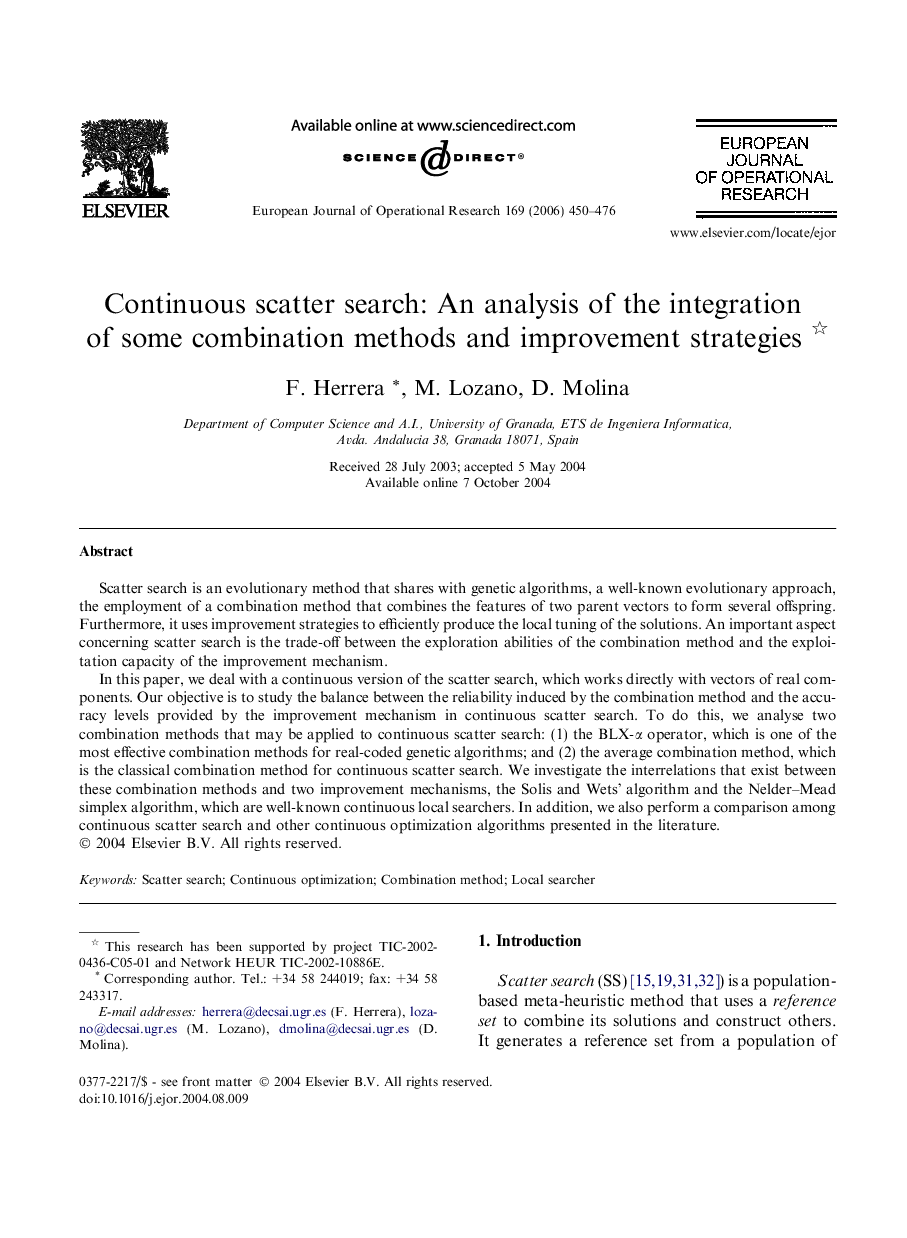| Article ID | Journal | Published Year | Pages | File Type |
|---|---|---|---|---|
| 482772 | European Journal of Operational Research | 2006 | 27 Pages |
Scatter search is an evolutionary method that shares with genetic algorithms, a well-known evolutionary approach, the employment of a combination method that combines the features of two parent vectors to form several offspring. Furthermore, it uses improvement strategies to efficiently produce the local tuning of the solutions. An important aspect concerning scatter search is the trade-off between the exploration abilities of the combination method and the exploitation capacity of the improvement mechanism.In this paper, we deal with a continuous version of the scatter search, which works directly with vectors of real components. Our objective is to study the balance between the reliability induced by the combination method and the accuracy levels provided by the improvement mechanism in continuous scatter search. To do this, we analyse two combination methods that may be applied to continuous scatter search: (1) the BLX-α operator, which is one of the most effective combination methods for real-coded genetic algorithms; and (2) the average combination method, which is the classical combination method for continuous scatter search. We investigate the interrelations that exist between these combination methods and two improvement mechanisms, the Solis and Wets’ algorithm and the Nelder–Mead simplex algorithm, which are well-known continuous local searchers. In addition, we also perform a comparison among continuous scatter search and other continuous optimization algorithms presented in the literature.
